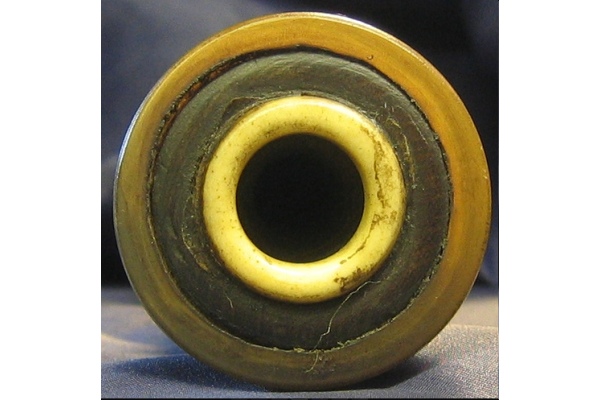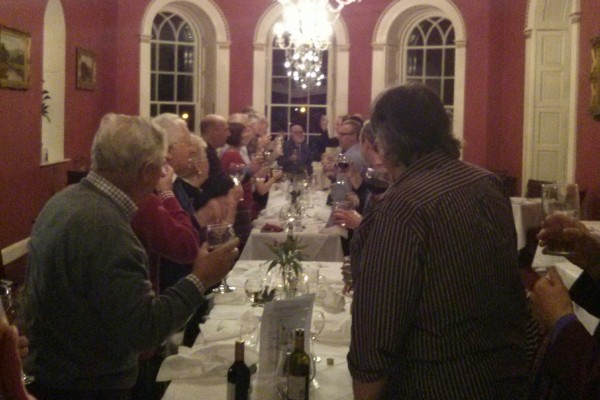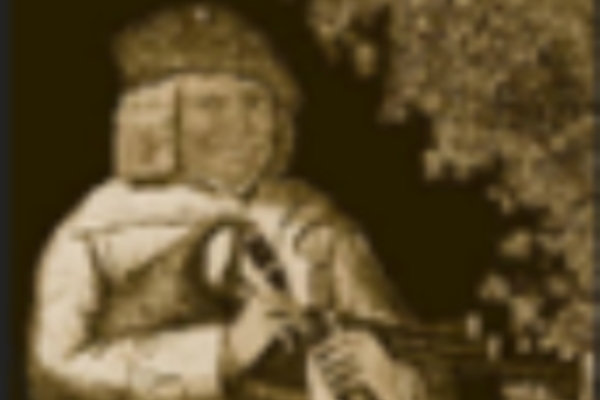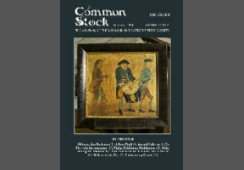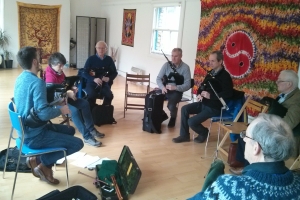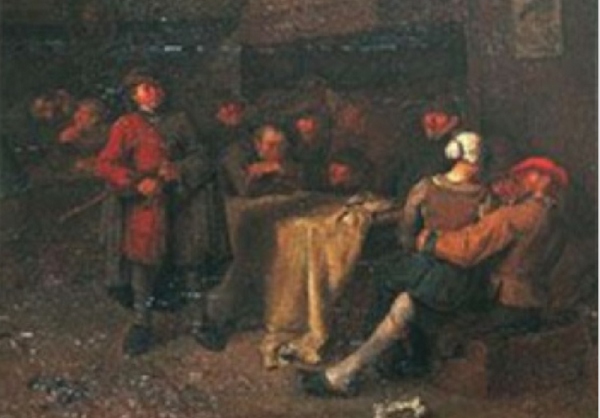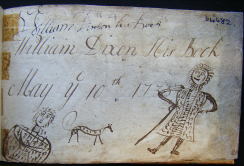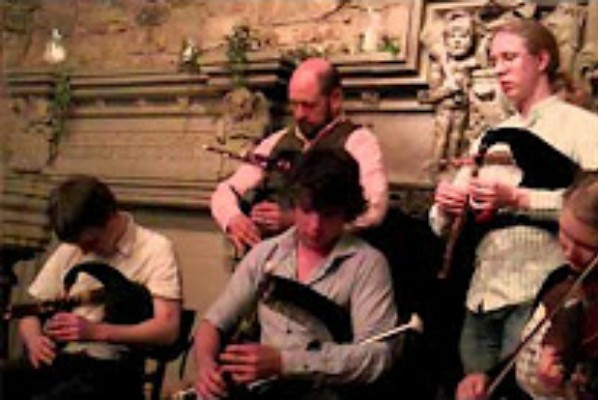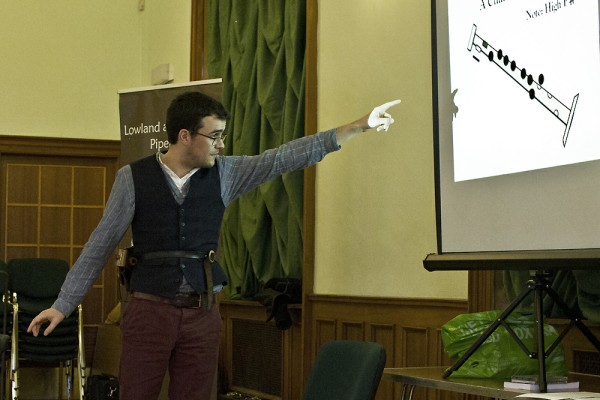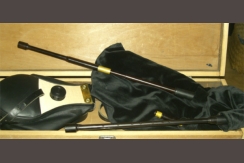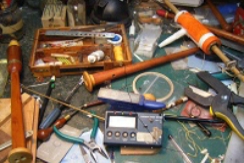The following four pages were omitted from the compilation CD from which the CDfrom which the onlineversion of the March 1990 issue was generated




THE FIRST time I ever saw Lowland Pipes was in the tumultuous “musicians corner" of Sandy Bell's Bar in Edinburgh, some time in the summer of 1976. I had wondered in for a Saturday afternoon pint and, while pouring the required pint, the late, acerbic Jimmy Cairney (he who once rounded on his regulars and told them they were bunch of F**** revolutionaries who didn't want anything to change), leaned over the bar in a confidential manner and told me that there was "a young gentleman up the back there playing a sheep". I duly made my way up the back to see this marvel for myself and there - amid the exuberance of the more regular musicians (Adam Jack on fiddle, Phil Cunningham on accordion, as I recall - this was back in the days when Bell's was still a fine ranting place for sessions), was a young man stolidly blowing away on a set of bellows-blown Scottish pipes.
I can't remember what he was playing, I only remember vividly the image. I didn't even know what they were called, and asked the piper if they were a chamber set, he replied that they were Lowland Pipes. Fourteen years on it was, therefore, a particular pleasure to have that same piper, Jamie MacDonald Reid, addressing the LBPS (near-excelling itself with a 17-strong attendance) in the School of Scottish Studies.
Jamie MacDonald Reid, who in recent years has done much research into Scottish dance and has been keeping busy with the folk music and dance ensemble Drumalban (well worth going to see if you get the chance), brought with him four sets of pipes; a Lowland get, a Highland set, a set of small pipes and an impressive looking Czechoslovakian bagpipe, the shaggy goatskin bag of which could only put me in mind of that comment of Jimmy Cairney's, so many years back.
Jamie's remarks about the Lowland and small pipes, their use and fingering, were particularly interesting. The set of Lowland pipes had been heirlooms from his Father's family, who came from Perthshire. Jamie himself started learning Highland piping at the age of nine. When he first got the Lowland set - made by William Mark of Aberdeen, possibly in the 1820s -it was minus the bass drone, and had a blowpipe fixed on instead of a bellows. In the mid-Sixties he took them to Glens in Edinburgh who repaired them for him, He found, however, that his Highland piping teachers tended to be very dismissive of them.., “although some of them had things to say about these pipes which I felt made sense,"
“Most of my piping teachers were Gaelic speakers, and they could come up with a Gaelic word for the bellows-blown pipe - a’ piob shionnach. They said these pipes were made for playing with fiddles (this would be in pre-accordion days)...they would be used in dance bands with fiddle and cello. It wasn’t until I read Baines' book on bagpipes that I discovered the term ‘Lowland pipes’.”
So Jamie's teachers clearly identified these cauld-wind pipes with playing or dancing, and this was qualified by their remarks about fingering. “I was told you didn't do a let of elaborate gracing on them. You kept as close to the melody notes as possible with your gracing.
"The set had very thin reeds and they should have just the right volume to play with a couple of fiddles. At school I had a music master who had records of French music and he felt the pipes could be played more in the French style." Most of the Lowland sets he heard nowadays tended to be stronger and louder than his, the volume of which was about the same as what the older Highland pipers he knew remembered of such pipes.
The Lowland set was tuned “smack on A"; the chanter reed was “a Highland reed chopped to pieces". The top leading note on the chanter could be fingered as a sharpened or flattened note (G flat or G), allowing one to play in D as well as A.
The Highland set he had with him, dating from the 1880s, was also pitched in A, and was a powerful but beautifully-toned instrument, Its low pitching, however, he said had attracted much disapproval in piping competitions. He believed its harmonic quality to be very different from most Highland pipes nowadays. Their pitching had been ideal when he had played them with an orchestra in Peter Maxwell Davies' composition Orkney Sunrise .
His Scottish small pipes, made recently by David Shaw, he described as "a real convenience instrument". He had been told that if pipes had a cylindrical bore you should use closed fingering, otherwise you didn't get the full harmonics. "I regard it as a Scottish musette,” he said.
Jamie has travelled widely in Eastern Europe and, in fact spent four years living in Yugos- lavia, Thus he was able to play the Czechoslovakian pipes and, indeed, sing while playing them. It was an impressive sight and sound altogether. His anecdotes about life and music in these Eastern European countries further contributed to an excellent meeting
